Somewhere, in some parallel dimension, there’s a BioShock Infinite that I liked a lot more than the one I played in this dimension. This week, as I played the second, final episode of Infinite‘s Burial at Sea expansion, I felt like I got glimpse of that game.
Spoilers follow for BioShock, BioShock Infinite and Burial at Sea Episode 1.
Burial at Sea has long promised to let us finally step into the shoes of Elizabeth, the young woman who in BioShock Infinite alternated as sidekick, damsel in distress, sad woman in need of comfort, super-powered plot device, and eventually, harbinger of the apocalypse. Burial‘s second episode picks up more or less immediately after the events at the end of the (generally disappointing ) first episode, with Elizabeth finally completing the circle by going to the first BioShock‘s underwater city of Rapture and hunting down and killing the final Booker/Comstock.
Of course, picking up “immediately after” the first chapter doesn’t really mean much in the multiverse of BioShock Infinite. In a matter of minutes, everything that seemed to (sort of) make sense at the end of episode one has been turned on its ear, and it’s off to the metaphysical races once more.
In short order, Elizabeth has been forced to make a deal with the treacherous revolutionary Atlas — who, as we who played the first BioShock know, is really the villain Frank Fontaine in disguise. Elizabeth is wracked with guilt over the fate of Sally, the little-girl-turned-little-sister she used as bait for Comstock in the first episode. Atlas has her, and will only release her and spare Elizabeth if she helps get their submerged wing of Rapture back up to the main city so that Atlas can launch the revolution that sets the stage for the first BioShock.
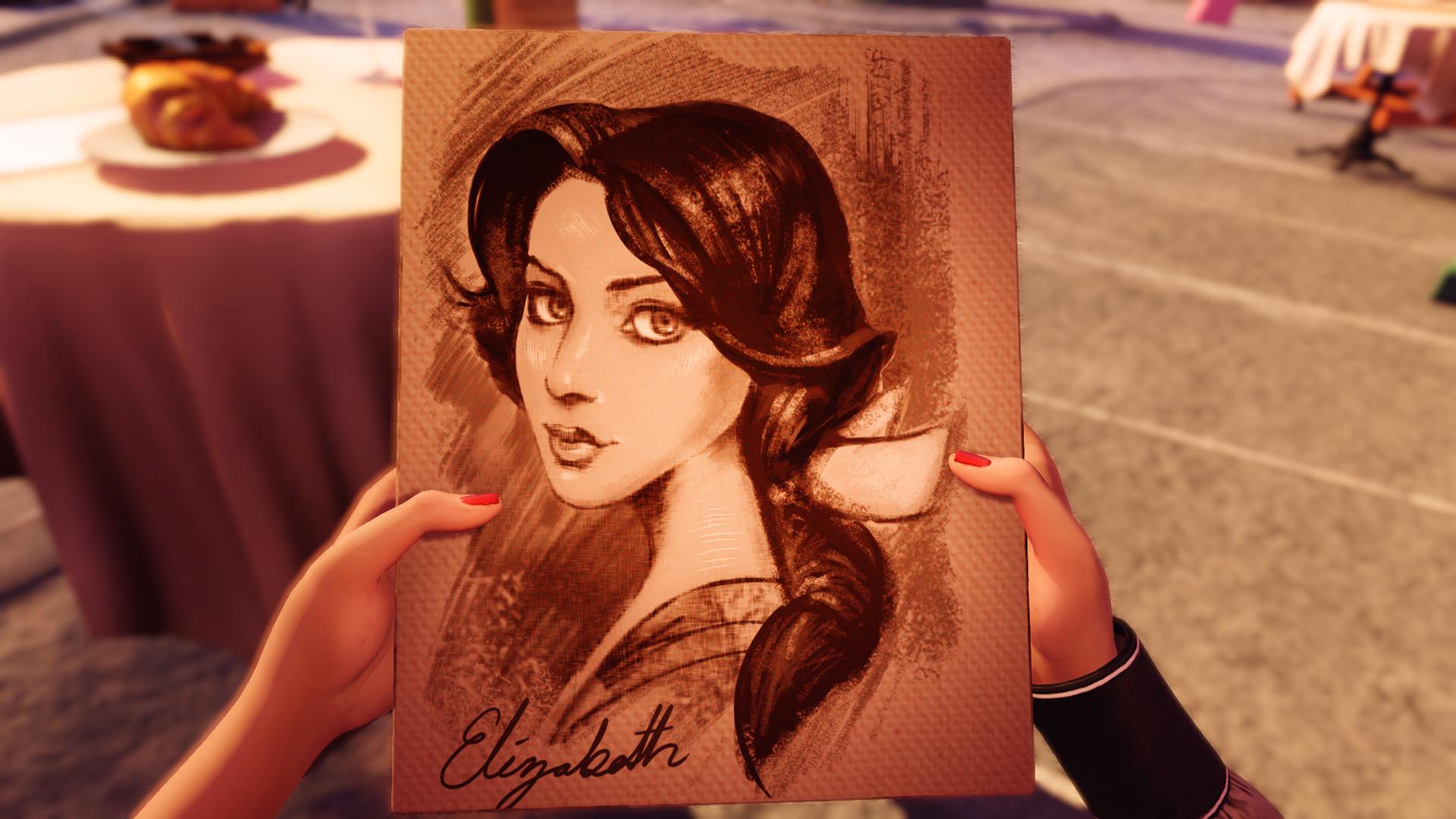
If this all sounds pretty twisty and back-referency, that’s because it is. Episode 2 is for the fans; specifically, the fans of the first BioShock. The story is both BioShock Infinite epilogue and BioShock prologue, and while it manages the latter feat more ably than the former, it achieves both tasks with a surprising measure of success. (Though we shall not, apparently, speak of BioShock 2, an underrated game that, at least in the timeline of BioShock Infinite, apparently never really happened.)
Here’s the first, most unexpected thing about Burial at Sea Episode 2: It’s a stealth game. Not an action game with half-baked stealth elements, like the first episode; this is a full-on, crouching in a corner, sneaking-up-on-enemies-from-behind, using-a-crossbow-to-knock-out-guards stealth game.
See, for reasons passing explanation, Elizabeth has been nerfed of her world-smashing cosmic powers, as well as her ability to see into the future. In her words, she’s “just a normal girl, with a normal pinky.” This has the welcome effect of grounding a story that had previously spun entirely out of control. We’re no longer dealing with the infinite planes of the multiverse, we’re just talking about a person in a place, trying to accomplish a thing. How nice.
Elizabeth can’t take very much punishment in a straight-up fight, and the levels are parsimonious with money, weapons and ammo. Smart players will stick to the shadows, creeping past most of the splicers who patrol Rapture without daring to take them on.
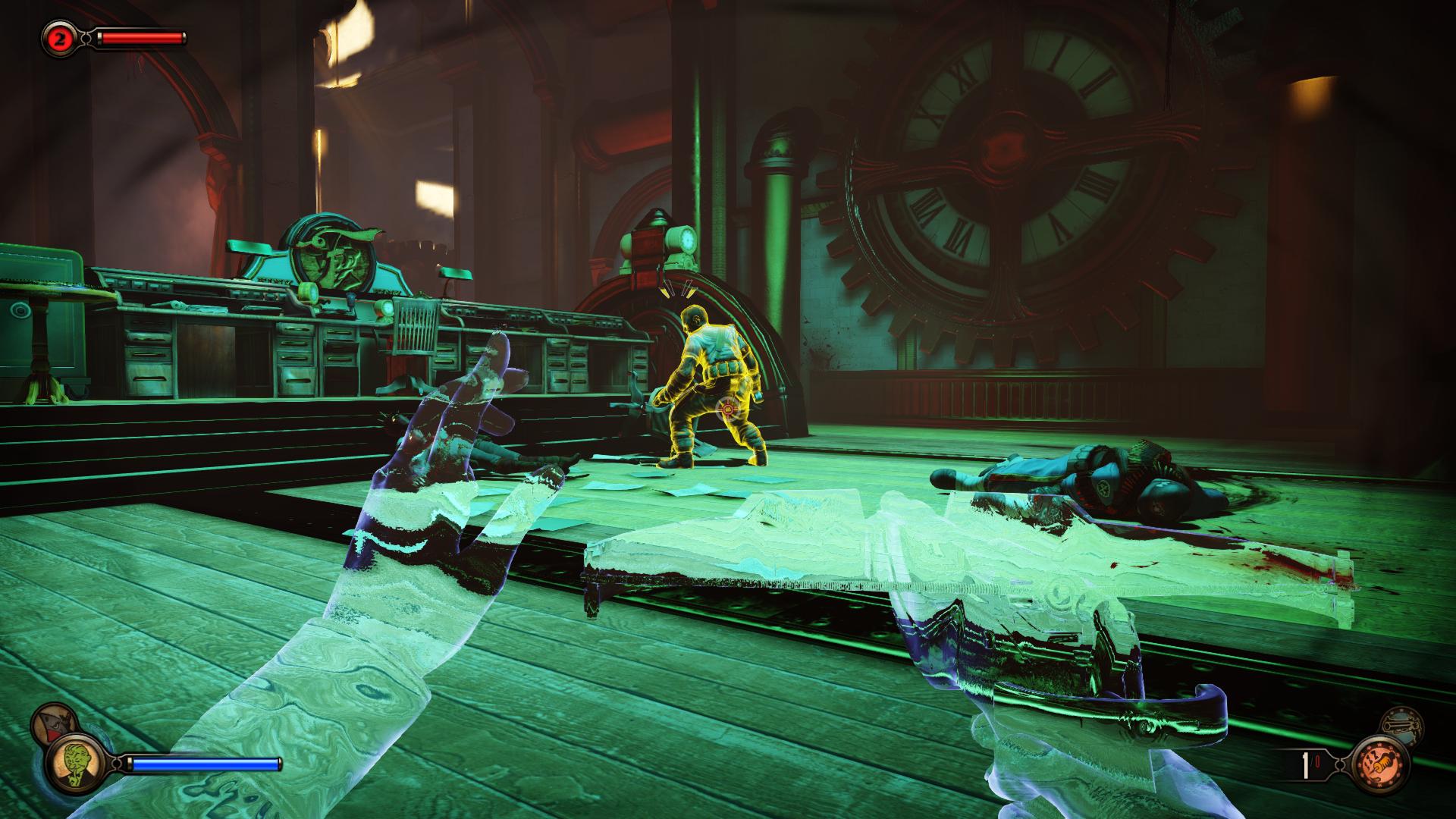
The stealth works, at least, it works far better than it might have. That’s largely due to a new plasmid ability Elizabeth gets that is, more or less, “Stealth magic.” It allows her to become invisible for a time and also highlights enemies through walls. All at once, players are given the situational awareness necessary to make sneaking fun; you can watch an alerted enemy cautiously make his or her way toward the room where you’re hiding, then quickly creep off behind a table as they enter the room. Then, as they go to investigate a dark corner, creep up behind them and… bam!
Elizabeth’s enemies are awfully dimwitted, and it often feels evident that the new stealth stuff has been grafted onto a game that wasn’t initially designed to support them. Bad guys are usually preternaturally good at hearing Elizabeth from across massive rooms, particularly when she steps on broken glass or into water, and the inconsistency of it all leaves the stealth feeling both insubstantial and unpredictable. But while hardcore stealth gamers may not be satisfied by the complexity of the simulation, it remains remarkable just how thoroughly a focus on sneaking changes the tenor of the game for the better.
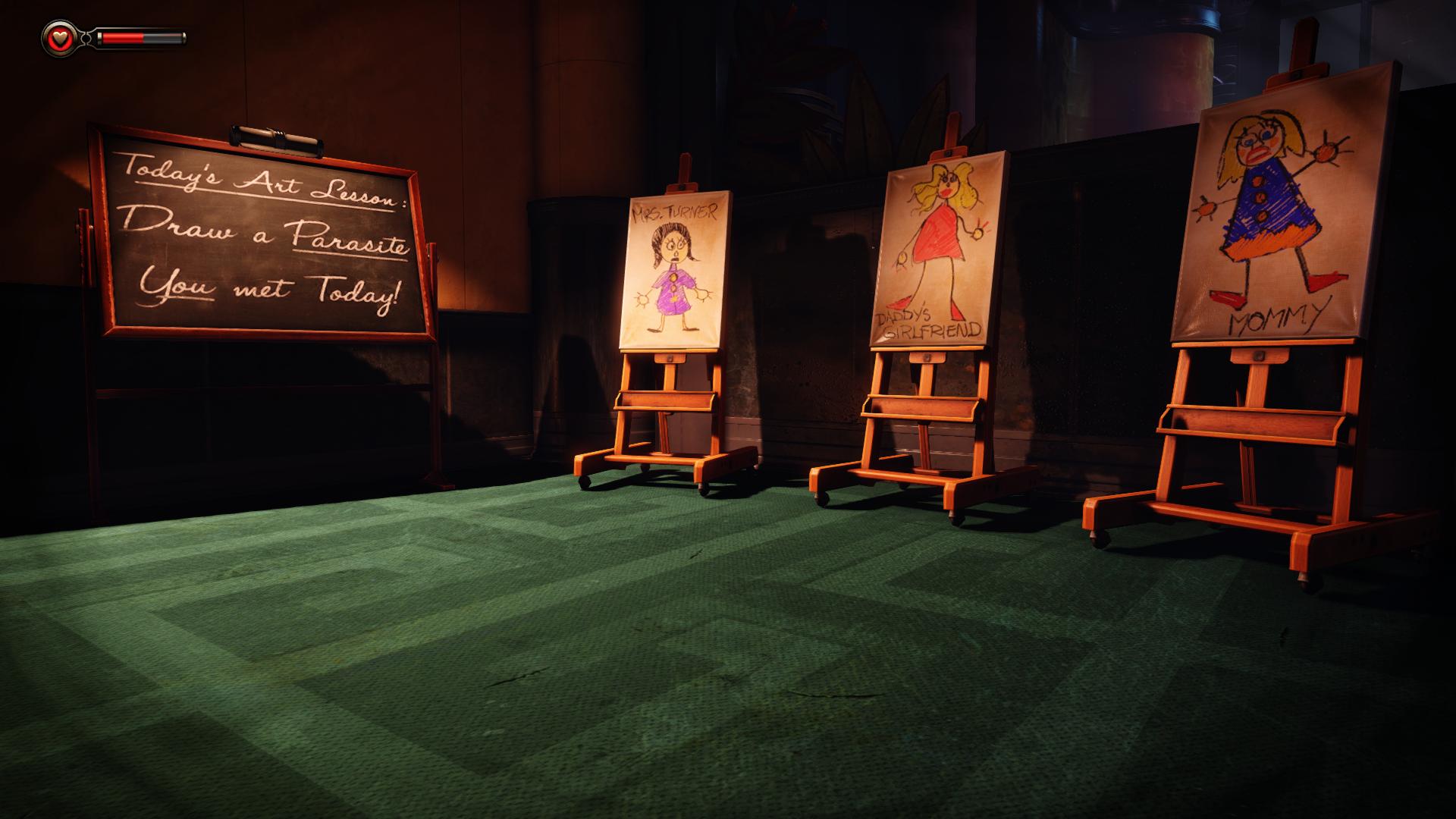
Burial at Sea has a constant tension that is far more engaging than either its first episode or, certainly, BioShock Infinite as a whole. I spent most of my time creeping through the various rooms and antichambers of Rapture, always alert, always listening, my eyes peeled for new threats. The game forces players to slow down and pay attention, and as a result is a much richer, more attuned experience than either of its predecessors.
In fact, the more I played, the more I found myself flummoxed as to why the whole of BioShock Infinite couldn’t have been more like this. It really does feel like an alternate-reality version of the game, one that slipped through one of Infinite‘s many rifts. Moment to moment, it’s a better, more interesting, more enjoyable game in almost every respect.
Sneaking through these gorgeous environments while avoiding terrifying enemies fits so well with the grandeur and horror of the BioShock series, and allows the cautious player so much more room to explore and drink in the sights. The many gripes I had about the core game’s combat are rendered largely moot thanks to Burial‘s stealth, as are many of my complaints about the over-the-top, distracting violence and gore. Burial at Sea is still a dark, violent game, but the violence feels much more spare and specific, and as a result the game is soaked in a level of tension that Infinite itself rarely achieved. For once, a BioShock game isn’t shouting at me. What a blessed relief.
It helps, too, that Burial at Sea is a sprawling, roomy game that greatly rewards exploration. It took me upwards of six hours to play through the entire episode, and I regularly found myself lost and unsure of where, precisely, I was supposed to go next. (In a good way.) Several large areas seemed entirely tangential to Elizabeth’s quest, but curious players will be well-rewarded for wandering. A few hidden rooms contain upgrades that make Elizabeth’s new stealth powers much more useful, letting her remain invisible and see through walls indefinitely as long as she remains still. It was after obtaining those upgrades that Elizabeth fully switched from prey to predator, and I found myself having more fun simply playing a BioShock game than I have in a very long time.
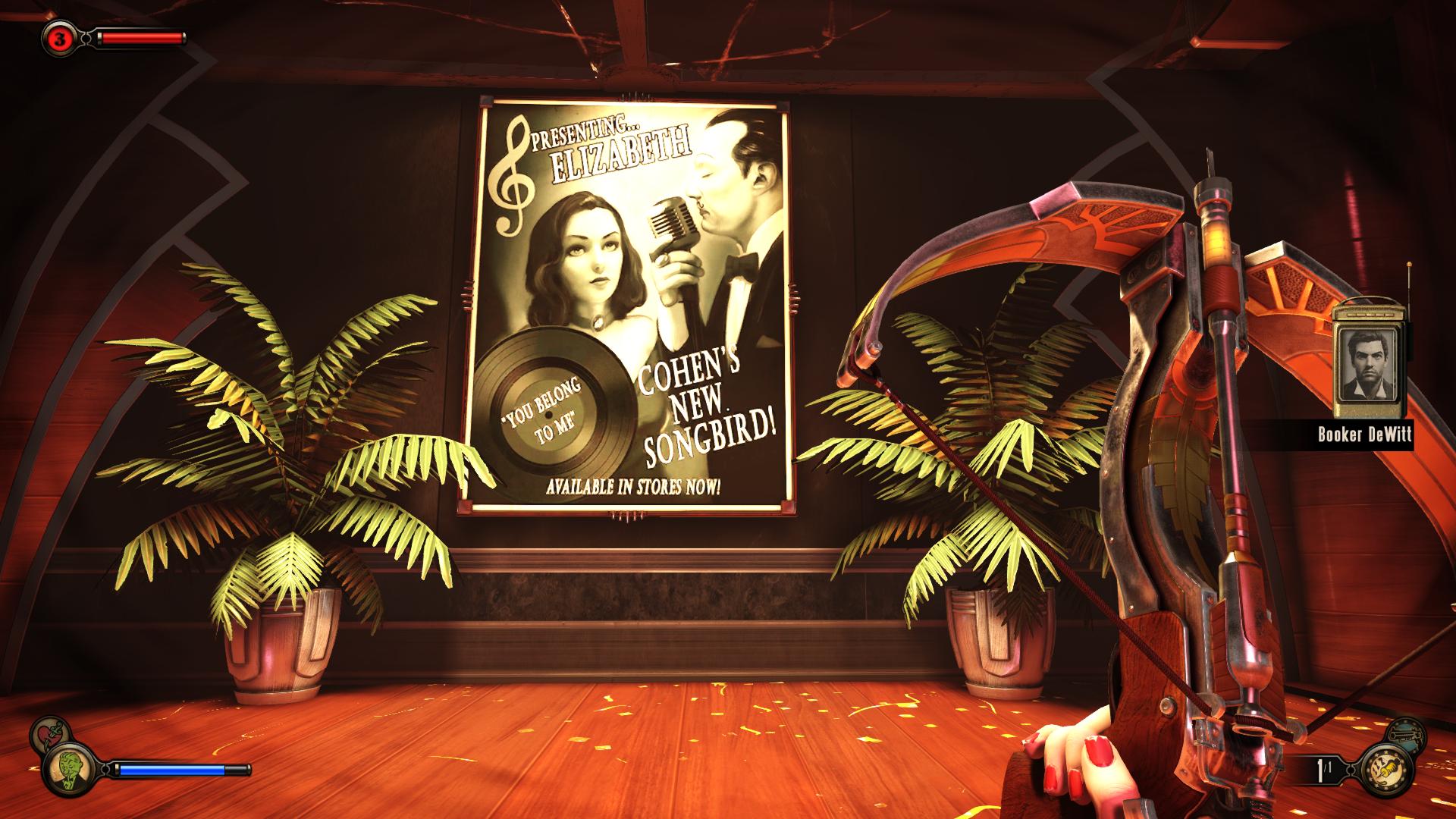
It has been interesting watching so many big-budget series experiment with letting players assume the role of their less empowered supporting characters. Burial at Sea, Assassin’s Creed IV: Freedom Cry, The Last of Us: Left Behind and the second season of The Walking Dead have all shifted focus from their traditionally empowered male protagonists to comparatively disempowered sidekick characters. (Even Adewale from Freedom Cry qualifies, given that he’s under suspicion and attack at all times due to his skin colour.) Every time a game has done this, we’ve gotten a more interesting story, a more interesting protagonist, and a more interesting game. There is a lesson here: Good games don’t need to have powerful protagonists, and in fact, many games benefit from putting the player in the role of the disempowered.
Other aspects of Burial at Sea’s story succeed and fail more or less equally. I’ve long since stopped caring enough to try to decipher the many lighthouses and many narrative doors of the Infinite universe. The series’ heady pseudo-scientific explorations continue here, as Elizabeth spends her downtime debating the nature of things over the radio with a possibly imaginary version of Booker. (It’s likely, though never quite confirmed, that she’s really just talking to herself.) Their frequent forays into the metaphysical rarely do much to illuminate the convoluted events at the end of BioShock Infinite, and Burial at Sea‘s story only really gains momentum when it circles back to the events at the start of the first BioShock.
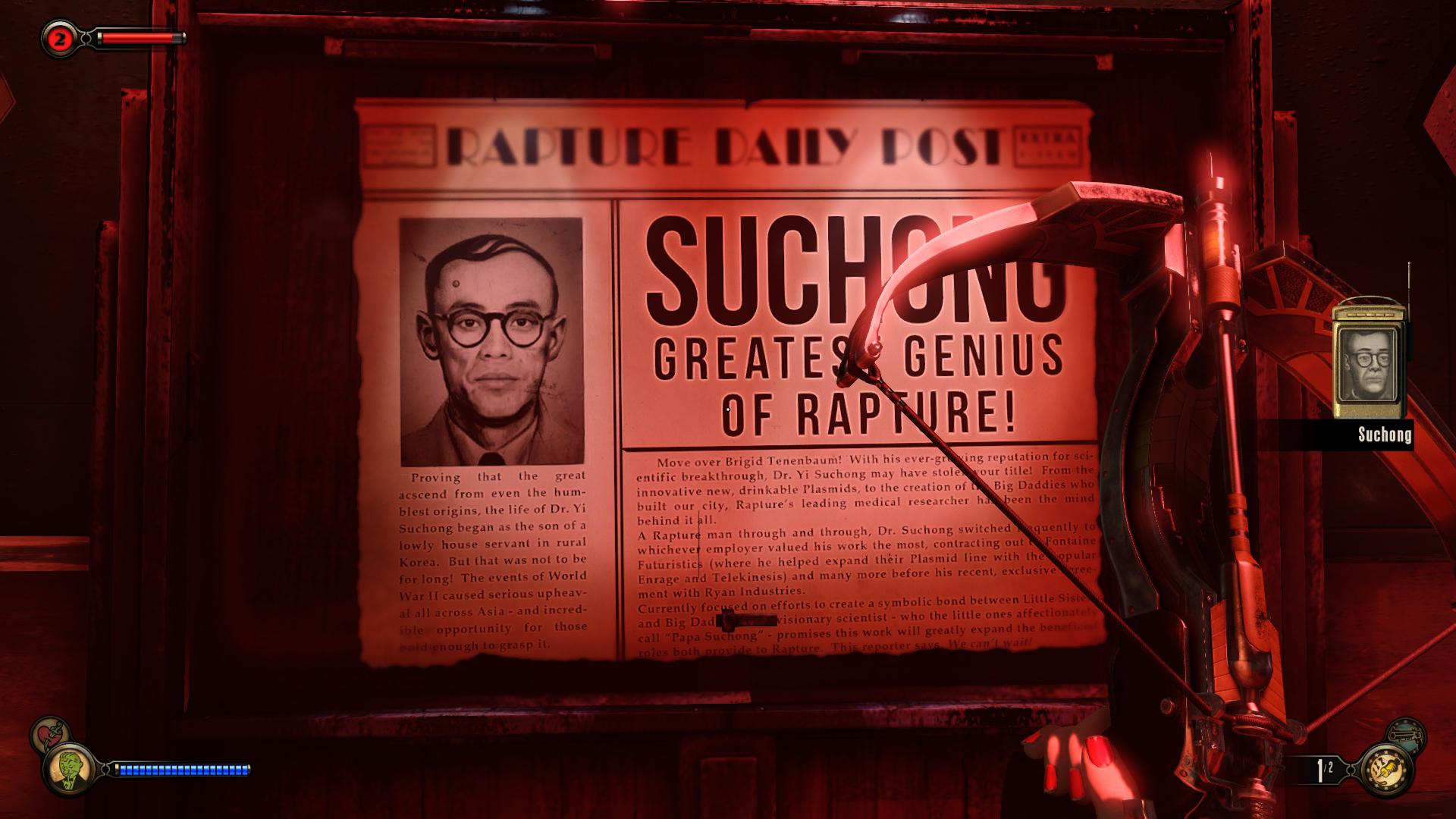
The irony, then, is that this strongest chapter in the Infinite saga is at its best when it focuses on the plot of the first game in the series. BioShock sure was a great game, wasn’t it?
Over the course of Burial at Sea we learn a great deal about the working relationship between Rapture’s Dr. Suchong and Columbia’s Jeremiah Fink, a relationship first hinted at in the original Infinite. That Columbia relied so heavily on Rapture’s scientific breakthroughs is fitting, I suppose, given how subordinate Infinite feels here to the first BioShock, but it does make it that much harder to feel all that invested in whatever transpired in the city above the clouds. Was this whole thing, the story of Elizabeth and Booker and Comstock and the rest, just a closed-loop morality play that existed to set off a revolution in Rapture? Seems like it was.
Actor Courtnee Draper does a fine job reprising her role as Elizabeth, turning in a gutsier performance than she did in the original game. Burial at Sea plays up Elizabeth’s smarts, with her regularly rattling off vital stats about high-tech machinery, displaying an encyclopedic knowledge of biology and metaphysics, and generally out-braining everyone in the room. “Just a whole lot of book-learning and a handful of lockpicks,” she says of herself, in a standard bit of self-effacement that admittedly rings false, given the incredible feats she pulls off over the course of the game.
This Elizabeth is a surprisingly grounded and relatable character, considering how many versions of her we’ve met in the past. She’s plagued by guilt and self-doubt, yet determined to see her mission through, haunted and desperate to undo a small fraction of the suffering she’s caused.
“We’d all be better off, us DeWitts, if we could leave well enough alone,” she muses at one point. As it turns out, it’s far more interesting to watch a character come to terms with her powerlessness than it is to watch her rip apart and rewrite the entirety of space and time.
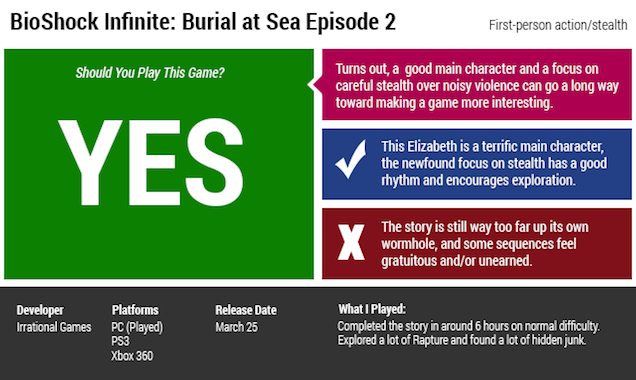
BioShock fans will see plenty of other familiar faces (and hear plenty of familiar voices) from the series, each character waltzing on and off stage with an appropriate amount of pomp and circumstance. Most of it works, though a blatant attempt to undo one of BioShock Infinite‘s more careless and problematic plot developments falls right on its face and never gets back up.
(Here comes a small spoiler) Columbia revolutionary Daisy Fitzroy, we now learn, did not simply snap and take a child hostage in Infinite. No, she was convinced to do it by the Lutece twins because it would force Elizabeth to kill her, thereby making Elizabeth into the woman she would need to be in order for the rest of the events of Infinite to play out. Rarely have I seen a more brazen attempt to sweep a widely criticised narrative screw-up under the rug, and with each of Fitzroy’s stilted monologues about her place amid the gears of fate, I groaned a little louder. (So ends the spoiler.)
Furthermore, a late-game torture sequence is gratuitous and nasty, as it gleefully forces us to witness a terrifically unpleasant, first-person depiction of anguish. As with last week’s Metal Gear Solid V: Ground Zeroes , I found myself asking: Haven’t video games given us enough of the excruciating suffering of women? Must yet another actress earn her voiceover stripes by standing at a microphone and screaming in agony? The entire sequence feels designed solely to shock and unsettle, with little actual reason to exist other than someone decided, “Hey, this would be cool.”
The same could be said of most of the game’s final twenty minutes, really. As the story careens toward its dark conclusion, much of what came before goes out the window and we are railroaded to a grim finale that, fittingly, finds itself far more concerned with the start of BioShock than with the end of BioShock Infinite.
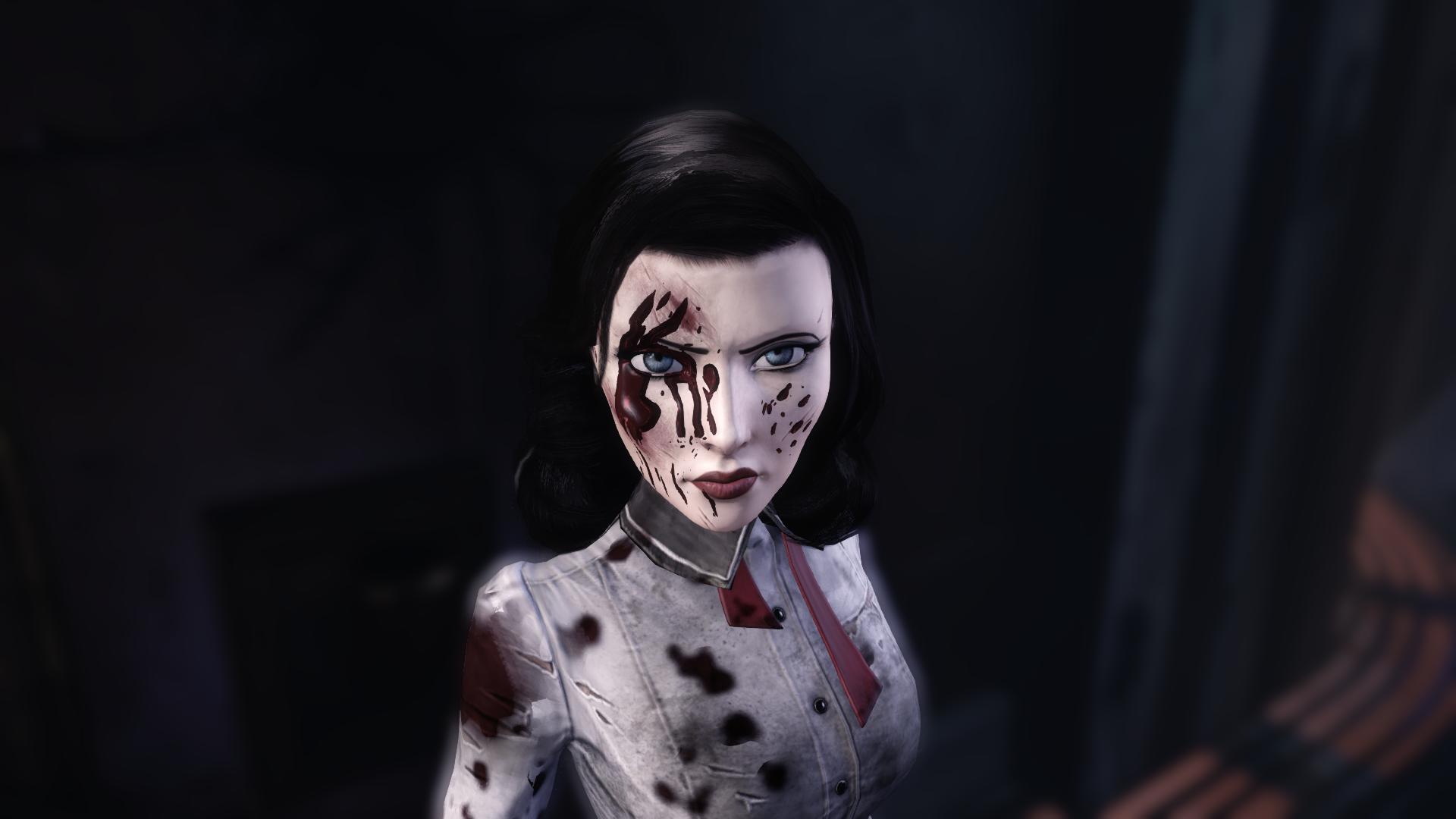
For all its narrative failings, Burial at Sea succeeds in a number of places that BioShock Infinite fell short. It successfully bridges the gap between Rapture and Columbia, giving both cities a fond, if muddled, farewell. As standalone surprises go, Burial doesn’t match the heights achieved by BioShock 2‘s fantastic add-on Minerva’s Den, but it comes closer than I was expecting.
It seems unlikely that this will be the last we’ll see of the BioShock universe, but given the current state of Irrational Games, it might be a while before we get a new entry in the series. Considering how thoroughly these games have become twisted up in their own metaphysical mumbo jumbo, an intermission is probably for the best. Let BioShock breathe and unwind, let it rediscover its center.
It’s hard not to wish that I could live in a parallel world where the entirety of BioShock Infinite had been as interesting and tense as this new epilogue; a world where the smarter game was the status quo, not the eventual exception. I don’t live in that world, but hey, at least there’s Burial at Sea. I’ll take it.
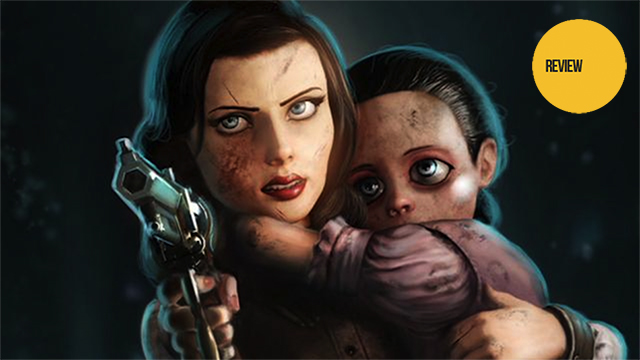
Comments
4 responses to “BioShock Infinite: Burial At Sea Episode 2: The Kotaku Review”
Can you still go in guns blazing?
I cannot stand stealth games, hence why I never got into the original Thief games.
Deus Ex is still the pinnacle here for me. My mate will always choose the stealthy option, and I’ll always choose the shoot-em-up option. We’d both consider it our favourite game.
It’s part of why I always disliked the Bioshock / Deus Ex comparisons.
Wow its not like thief in any way u can still go guns blazing just stealth is another way to play it u can still play the same as all bioshock if u like kts funny u compare bioshock to deus ex cus there’s no comparision between the 2 2 completkly different style games
Argh noticed this update on my steam the other day.
So many games to play
To be fair I can’t comment on the series as I only played half of Bioshock 1 and finished Infinite. However, there were a number of areas particularly after freeing Elizabeth where you could quite happily walk through without needing to fight. Perhaps this was intended from the start? and the stealth is an extension of that part of the game engine? I did notice that you didn’t need to go guns blazing into every area and this represented a unique change of pace. Particularly if it was off the back of a previous violent encounter. It enhanced the “escape” aspect for me, and I thoroughly enjoyed it. Once again not a big Bioshock player but if it was intended I appreciated it. Alternatively, my game was glitching out at certain points and if I didn’t have weapons out people didn’t mind/try to kill “The Devil” stealing their saviour.
please 2k make a sequel to infinite